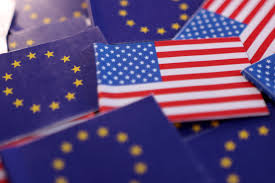
Breaking News
 Why Geological Maps Are the Best Investment You've Never Heard Of
Why Geological Maps Are the Best Investment You've Never Heard Of
 High School Student Discovers 1.5 Million Potential New Astronomical Objects...
High School Student Discovers 1.5 Million Potential New Astronomical Objects...
 UK Supreme Court says legal definition of 'woman' excludes trans women, in landmark ruling
UK Supreme Court says legal definition of 'woman' excludes trans women, in landmark ruling
 Major Problem in Physics Could Be Fixed if The Whole Universe Was Spinning
Major Problem in Physics Could Be Fixed if The Whole Universe Was Spinning
Top Tech News
 Kawasaki CORLEO Walks Like a Robot, Rides Like a Bike!
Kawasaki CORLEO Walks Like a Robot, Rides Like a Bike!
 World's Smallest Pacemaker is Made for Newborns, Activated by Light, and Requires No Surgery
World's Smallest Pacemaker is Made for Newborns, Activated by Light, and Requires No Surgery
 Barrel-rotor flying car prototype begins flight testing
Barrel-rotor flying car prototype begins flight testing
 Coin-sized nuclear 3V battery with 50-year lifespan enters mass production
Coin-sized nuclear 3V battery with 50-year lifespan enters mass production
 BREAKTHROUGH Testing Soon for Starship's Point-to-Point Flights: The Future of Transportation
BREAKTHROUGH Testing Soon for Starship's Point-to-Point Flights: The Future of Transportation
 Molten salt test loop to advance next-gen nuclear reactors
Molten salt test loop to advance next-gen nuclear reactors
 Quantum Teleportation Achieved Over Internet For The First Time
Quantum Teleportation Achieved Over Internet For The First Time
 Watch the Jetson Personal Air Vehicle take flight, then order your own
Watch the Jetson Personal Air Vehicle take flight, then order your own
 Microneedles extract harmful cells, deliver drugs into chronic wounds
Microneedles extract harmful cells, deliver drugs into chronic wounds
 SpaceX Gigabay Will Help Increase Starship Production to Goal of 365 Ships Per Year
SpaceX Gigabay Will Help Increase Starship Production to Goal of 365 Ships Per Year
Hard To See How EU Can Strike A Deal, Without Writing A Check

If there exists something like a flash crash, then should we call yesterday's move a flash rally? About an hour after the opening bell, in a matter of seven minutes, the S&P 500 moved from a 2.3% loss on the day to a 3% gain. Bloomberg calculated that the rumor that Trump was considering to delay his country-specific tariffs by 90 days added $2.5 trillion back to equity valuations, but most of those gains were quickly lost again when the president denied the story as being "fake news."
Although that reversed the rally, interestingly, the selling spree did not resume. The S&P 500 fluctuated between a 5,000 and 5,100 band for the remainder of the trading day. Was this a well-placed intervention to try and stop the bleeding, or was it pure coincidence? It certainly gave rise to new hope that a large enough decline in stocks would force Trump to reconsider.
Even Trump's threat to impose an additional 50% tariff on China, in response to their retaliation, did not really dent US markets much. Nor did his threat to cancel all scheduled talks with Beijing until the Chinese government lifts its retaliatory tariffs. Perhaps that's because President Trump added that he remains open to "fair deals" with every country, and that negotiations with those countries that have requested meetings will begin immediately.
Treasury Secretary Bessent announced that over 70 countries have approached the US to negotiate. But does the US have the capacity to negotiate all of these at once? There will probably be a queue of countries waiting for their chance to discuss a trade deal. So it's a case of first-come, first-serve.
Japan, being one of the first to reach out to the US, is expected to get priority in the trade talks. But that doesn't mean a deal will quickly be reached. Even though Japan has already offered concessions, Trump denounced the Japanese non-tariff barriers on agricultural products.
Where does that leave Europe? The bloc's trade ministers were still discussing their response yesterday – both potential countermeasures they can implement, as well as the deals they could offer Trump. So, the EU is probably not the first in the negotiating line after Japan. Moreover, Trump is vehemently opposed to the EU's non-tariff barriers as well. And if the EU decides to implement rebalancing measures while it awaits any deal, what's the risk that Trump cuts them off, just like he did China?



